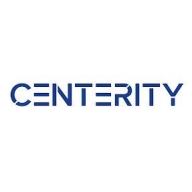

Nagios XI and Centerity Monitor are competing products in the network monitoring space. Centerity Monitor seems to have the upper hand with its advanced performance analytics offering a technological edge.
Features: Nagios XI is recognized for its robust historical presence with a strong community backing. Its extensive plugin library allows high customization for diverse IT environments. Real-time alerting capabilities provide immediate notifications. Centerity Monitor, on the other hand, focuses on an integrated approach offering advanced performance analytics for deeper insights. Its comprehensive analytics facilitate predictive analysis, making it suitable for environments that require detailed performance insights.
Room for Improvement: Nagios XI could enhance its analytics capabilities to provide more predictive insights. Streamlining the deployment process might also be beneficial for users looking for quicker setup. Better integration options could expand its adaptability in varied environments. Centerity Monitor could benefit from a lower initial cost to attract smaller enterprises. Expanding its plugin library might increase configuration flexibility. Further enhancement of documentation would assist users in optimizing the use of its features.
Ease of Deployment and Customer Service: Nagios XI offers a step-by-step configurability with extensive documentation, though it may require considerable manual setup. Centerity Monitor provides a streamlined deployment process demanding less manual configuration, supported by responsive customer service, which users find easier to set up and maintain.
Pricing and ROI: Nagios XI typically offers a lower initial setup cost, appealing to small to mid-sized enterprises needing essential monitoring capabilities. Centerity Monitor, despite a higher initial cost, often delivers greater ROI, thanks to its comprehensive analytics and efficiency. The investment required can be justified with its potential for a higher ROI over time due to its advanced monitoring and detailed insights.

Nagios XI provides monitoring of all mission-critical infrastructure components, including applications, services, operating systems, network protocols, systems metrics, and network infrastructure. Third-party add-ons provide tools for monitoring virtually all in-house and external applications, services, and systems.
Nagios XI uses a powerful Core 4 monitoring engine that provides users with the highest levels of server monitoring performance. This high degree of performance enables nearly limitless scalability and monitoring powers.
With Nagios XI, stakeholders can check up on their infrastructure status using the role-based web interface. Sophisticated dashboards enable access to monitoring information and third-party data. Administrators can easily set up permissions so users can only access the infrastructure they are authorized to view.
Nagios XI Benefits and Features
Some of the benefits and top features of using Nagios XI include:
Reviews from Real Users
Nagios XI stands out among its competitors for a number of reasons. Several major ones are its integration options and monitoring abilities, as well as its alerting features.
David P., a senior DevOps engineer at EML Payments Ltd, writes, “We use Nagios as a network discovery tool. We use Nagios to maintain our uptime statistics and to monitor our services. It has allowed us to be much more sophisticated in our monitoring and alerting.”
An IT-OSS manager at a comms service provider notes, “Nagios XI has a custom API feature, and we can expose custom APIs for our integration. This is a great feature.”
We monitor all IT Infrastructure Monitoring reviews to prevent fraudulent reviews and keep review quality high. We do not post reviews by company employees or direct competitors. We validate each review for authenticity via cross-reference with LinkedIn, and personal follow-up with the reviewer when necessary.